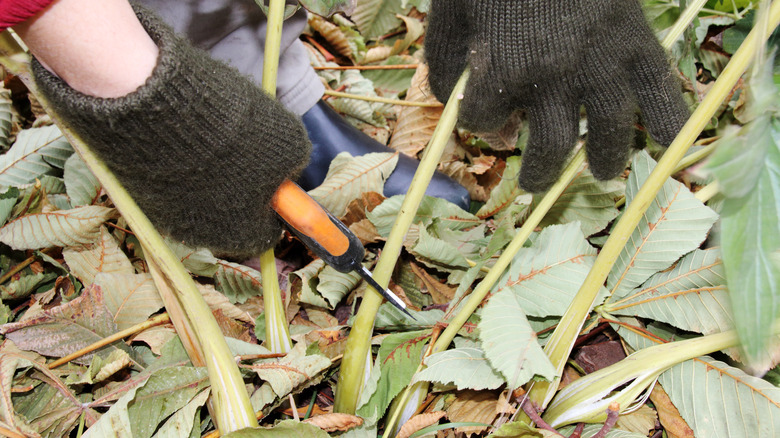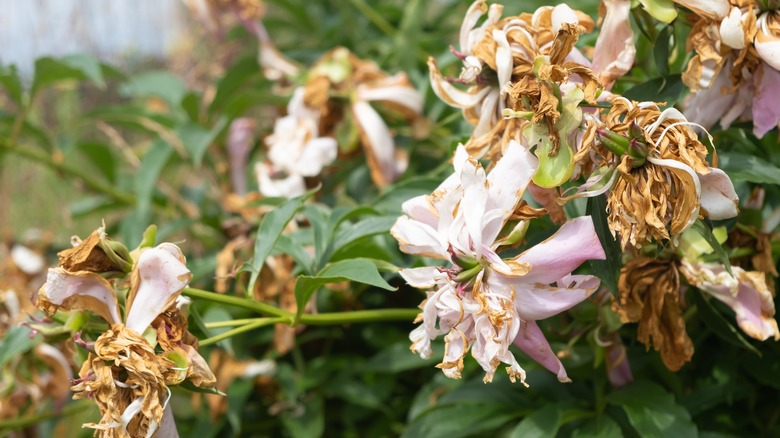The fluffiness of peonies will make any garden feel like a cottagecore dream. The big flowers are bold yet elegant, gracefully becoming the star of your garden. You’ll want to keep these flowers happy, which is why deadheading peonies throughout the summer is so important. But you also need to cut them back at the end of the year. Doing so will help produce more flowers the following year.
Cutting back any flower may seem like an intimidating chore. How are you supposed to know which parts of the plant to keep and which to get rid of? If you don’t know which stems produce new blooms next year, cutting your pretty peonies back could be a major regret next year. But, not to worry. Doing so is relatively simple once you know what to look for, and it’ll be something you’ll want to do each year so you can continue to bask in their beautiful glory.
How to cut back peonies

Cutting back peonies is all about the timing. If you do it too early, you take away the plant’s energy to produce new flowers next year. It’s best to wait until late fall after the first hard freeze. The plant will suffer damage, and you’ll be able to identify which branches need to go without second-guessing yourself. It’s as if the plant tells you exactly what to do, which any gardener can appreciate.
When you cut your peonies, use sharp and clean shears to reduce the spread of diseases. Start with dead limbs and cut them to about four inches above the ground. Remove branches that appear to be dying or diseased. However, you don’t need to worry about removing healthy stems that provide new growth; peonies are perennials, but they grow annual stems with flowers that emerge and die in the same year. If you remove dead or damaged foliage and leave the rest for next year, your peonies will be in great shape.
Avoid these mistakes

You may be tempted to cut back your peonies as soon as they stop blooming, but leave them alone until the first freeze. The plant’s green foliage absorbs sunlight through fall to create and store energy for flower development next year. If you remove too much foliage too soon, you’re taking away energy from the plant and could reduce how many flowers you get next year.
It’s important to make sure you remove all diseased foliage, including what drops on the ground. Some diseases can survive winter and will infect your plants in the spring. Disinfect your pruning tools, rake the area clean, and make sure you don’t use any diseased mulch.
You also don’t want to cut back your tree peonies. Tree peonies grow on woody stems that develop new blooms in the spring. Cutting them back will reduce how many blooms you have next year. Only deadhead peony blooms as they die out and leave the cutting back to the herbaceous kind.



